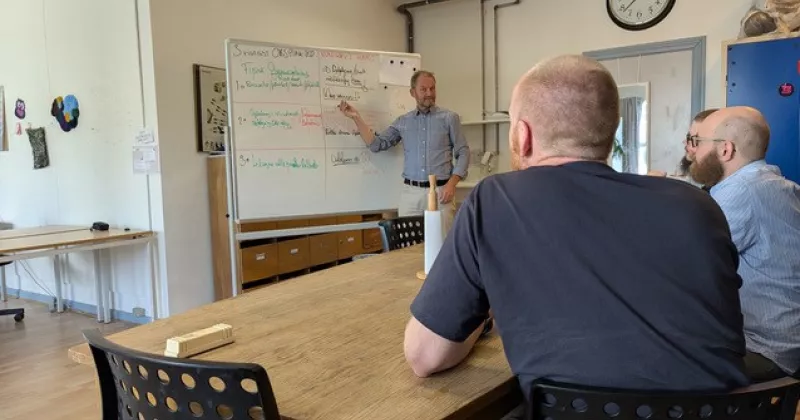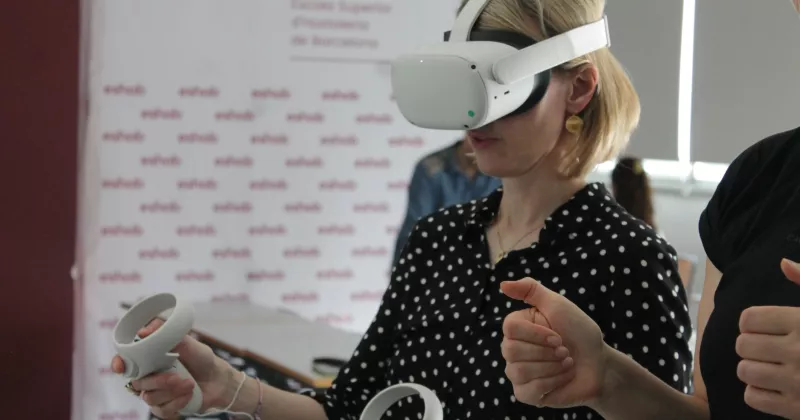Sustainable development and lifelong learning
Education is often viewed as key to sustainable development. Many countries include the concept in kindergarten and school curricula. The Norwegian Law on Universities even defines sustainable development as one of the main purposes of higher education.
Through the education process pupils, students, and participants in lifelong learning are expected to understand the connections between and consequences of human living and use of natural resources and ensure sustainable development through active actions and choices. Topics of sustainable development are not only related to the environment and climate, but also cover poverty, conflicts, justice, health, gender equality and technology. This reflects the complexity of sustainable development, which embodies its currently accepted form in the UN Sustainable Development Goals.
Given Europe´s high education level, and the fact that sustainability has been part of our curricula since the 1970s, Europeans should be well placed to develop sustainable societies.
The question is whether there really is a connection between the population's and the individual's level of education and how sustainable a society is. Certainly, educational institutions can communicate facts about sustainability, but do their participants and audience develop the attitudes and action skills needed to make the choices that ensure sustainable development?
Educational attainment and sustainability - is there a connection?
Ideally, the knowledge, skills and attitudes developed from kindergarten onwards should be expanded and strengthened throughout school and into higher education, further and continuing education, and perhaps the most important learning arenas for most people: private life and working life. Like democratic skills and attitudes, sustainable competence can be seen as a process that must be maintained, used, and renewed.
Europe has a well-educated population. 32% of 25-74-year-olds in the EU have tertiary education (42% of 25-34-year-olds and 47% of women in this age group), and 45% have completed upper secondary school. While adult participation in lifelong learning is low, at 11% of the population, the high proportion of adults in employment suggests that many learn at work. Europeans are also active in their leisure time: about half of the population are engaged in civil society organisations.
If there is a connection between sustainability and participation in lifelong learning and education, it follows logically that educated Europeans have factual knowledge, clear attitudes, and action competence in sustainable development. But is this true? In this article I will have a look at my home country Norway as well as a selection of European countries.
Example: greenhouse gas emissions
Carbon dioxide (CO2) is a greenhouse gas, i.e. one of the gases that has a negative impact on the climate. Carbon dioxide emissions per capita provide an example of whether the inhabitants of a country make sustainable development a priority. In 2022, the EU (average) citizen emitted 6.2 tons CO2, while the global average is 4.7 tons. The 15 countries with the lowest emissions are all in Africa. Some may believe that all European countries emit much CO2, but that's not true. The countries with the highest emissions in Europe are Luxembourg (12 tons per person), Czechia (9.3), Poland (8.1), and Germany (8 tons), while Sweden and Latvia emitted only 3.6 tons per capita in 2022, and Malta 3.1 tons. Norway emitted 7,5 tons CO2 per person, 25% of which was discharged from the oil and gas industry.
If we believe that educational attainment and sustainable development are linked, we would expect that the European countries with the most educated population have the lowest emissions per capita. However, this is not the case. High-emissions countries Czechia and Poland have the lowest share of people with low education in the EU (less than 10%, while EU average is 23%). In Malta, which has the least volume of CO2 emissions per person, 40% of the population has low educational attainment.
Coal is the main culprit in Poland´s and Czechia´s greenhouse gas emissions. The economic advantages of fossil fuels industries are important reasons why Poland, Czechia, and Norway are not sustainable societies. A restructuring of the industry is therefore necessary. But are the countries ready for such changes? Do the well-educated inhabitants have the knowledge, attitudes and action skills needed to achieve the goal of sustainability?
An important fact in sustainable development is that climate change is predominantly a result of human activity and impact (e.g. CO2 emissions). However, studies show that less than half of all Poles and only 61% of Norwegians know that climate change is mainly man-made, and that just 40% know that climate change is already a threat to humanity. In Norway, only 16% of the population think climate change is causing harm to them personally right now.
Several studies have been conducted to investigate the European population's attitudes to climate change. In general, these surveys show that Norwegians and Poles are less concerned than others about climate change and the consequences it will have for future generations, and that Norwegians have greater faith in new technology solving the climate crisis. The consequences of climate change are a highly polarized topic among Norwegians, with some climate scientists being targeted by hate groups.
More than half of the Norwegian population believe Norway should continue the exploration of new oil and gas fields. Although the youngest (under 29) are the most negative to continued exploration, the majority in this age groups favours oil as well. All political parties in Norway are negative to a stop in the oil and gas production now. Despite a widespread and high level of education in the population and active participation in lifelong learning, most Norwegians are unwilling to give up the oil and gas industry to achieve the goal of lower greenhouse gas emissions. There is a lack of knowledge, attitudes, and action competence to ensure sustainable development.
Example: fighting poverty and inequality
In addition to halting climate change, the fight against poverty and economic and social equality within and between countries is the main purpose of the UN Sustainable Development Goals (SDGs).
While the EU countries are working to reach the SDG poverty target, 22% of the population (almost 100 million people) are still at risk of poverty or social exclusion. If we return to the arguments presented earlier in this article, the well-educated European population should be well placed to combat poverty and ensure social and economic equality in the population, thereby strengthening society's sustainable development. There are two main ways of approaching the problems of poverty and inequality: increasing the incomes/benefits for those with lowest income will reduce the number of poor, and a redistribution (usually by taxing) of existing wealth will reduce inequality.
In 2021 Eurofound analysed the distribution of wealth and its role in social mobility in 21 EU Member States. Austria, Cyprus, Germany, and the Netherlands are the countries with the highest wealth inequalities in Europe. The differences in net wealth in Europe are much higher than the differences in GDP per capita. Eurofound´s findings are important as they underscore the need for structural redistribution of wealth to combat inequalities. Despite this, only a handful countries in Europe tax the wealthy. Even though we know the extent of economic inequalities in our societies, we are unwilling or incapable to implement measures targeting such inequality.
Norway is one of the countries that has seen an increase in poverty and economic inequality. In 1991, 4.7% of the population had an income below 50% of the median, while in 2019 the percentage had increased to 8.3. In 1995, the 10% with the greatest wealth owned 45% of the total wealth in Norway. In 2016, they owned 58%. To combat inequalities, the current Norwegian government has increased the net wealth tax to 1.1 percent, causing billionaires to leave the country as “tax refugees”. Despite the fact that a majority of Norwegians agreethat the rich should pay more taxes, current polls indicate that tax conservative political parties will win most seats in the next Parliament election.
A survey also shows that eight out of 10 Norwegians believe that the authorities must do more to combat poverty in Norway. However, the survey shows that the level of education creates the biggest divide between respondents in the survey: 72% of those with a master's degree call for more efforts to combat poverty, while 88% of those with only primary school say the same. According to this survey, there is no correlation between high levels of education and attitudes towards poverty reduction; rather the opposite.
Conclusion
In this article, I have taken a closer look at the two main themes of the UN Sustainable Development Goals: cutting greenhouse gas emissions and combating poverty and inequality. I have challenged the commonly held belief that educational attainment and sustainable development are linked by looking at knowledge, attitudes, and action competence around these two themes. In the case of Norway and Poland, for instance, economic dependence on fossil fuels explains the high greenhouse gas emissions while the population´s high educational attainment has not yet impacted industrial restructuring. Likewise, while the EU has included goals linked to poverty and inequality in their political agenda for years, the well-educated population is yet incapable or unwilling to lift 100 million Europeans out of poverty or neutralise economic inequalities.
Norway has high scores on many of the SDGs, and most people would probably say that this reflects a well-educated, enlightened, and democratic population - and one that lives in one of the richest countries in the world. However, it is sobering that we do not see - or want to see - the missing links between sustainable development and the oil and gas industry, the increase in poverty, and socio-economic disparities. Despite readily available knowledge on these topics, we lack the attitudes and action skills needed to make the changes necessary to achieve the goal of a sustainable society.





